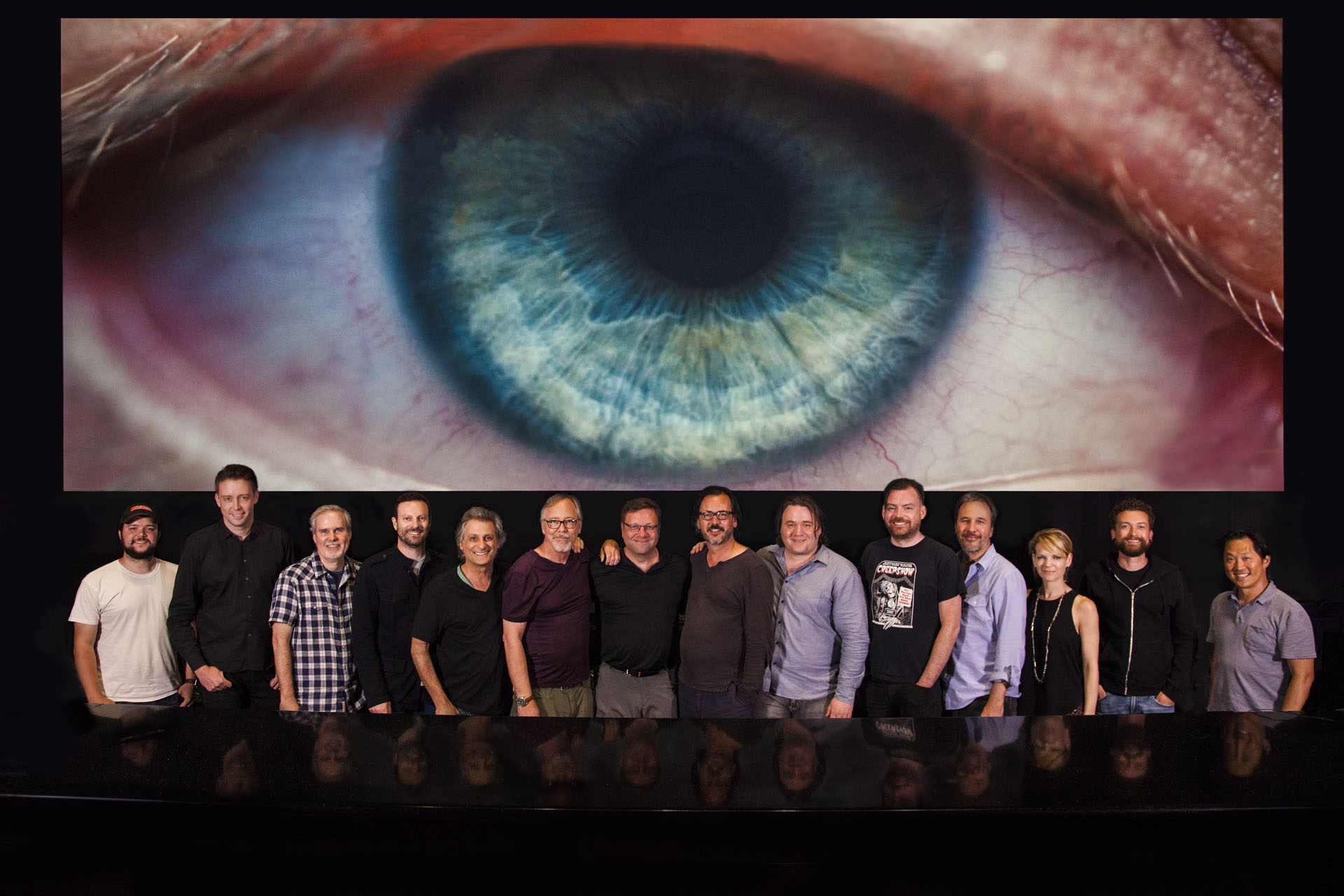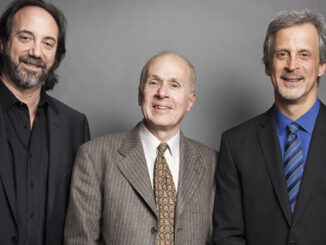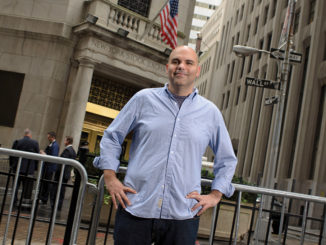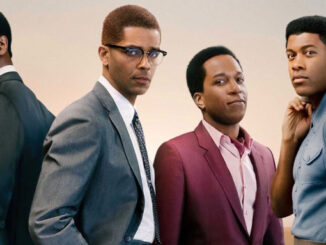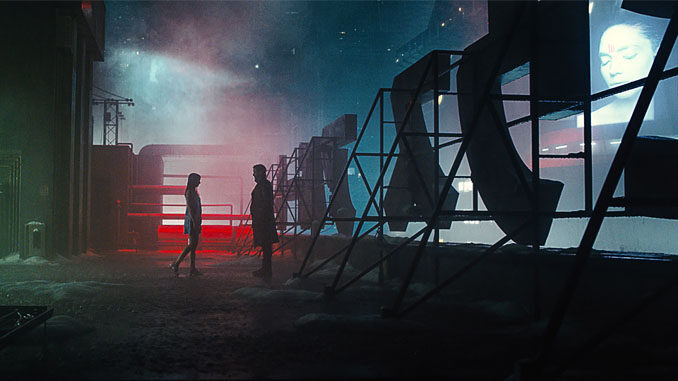
by Mel Lambert
As one of the most anticipated sequels, with one of the longest waits ever for it to come to fruition, director Denis Villeneuve’s recently released dystopian Blade Runner 2049 pays tribute to Ridley Scott’s iconic sci-fi offering from 1982. But it possesses a creative tone and editorial sensibility that is fully in keeping with Villeneuve’s existential vision of filmmaking, utilizing sound and image editing techniques that have emerged during the past 35 years.
The film was edited by Joe Walker, ACE, on his third collaboration with Villeneuve, following Sicario (2015) and Arrival (2016). Heading up the sound team from LA’s Formosa Group was supervising sound editor Mark Mangini, MPSE, working closely with sound designer Theo Green and sound editors Christopher S. Aud, MPSE, Lee Gilmore, MPSE, and Greg ten Bosch, MPSE. The soundtrack was re-recorded on the William Holden Stage at Sony Pictures Studios, by Ron Bartlett handling dialogue/ADR and music, and Doug Hemphill, CAS, overseeing sound effects and related elements.
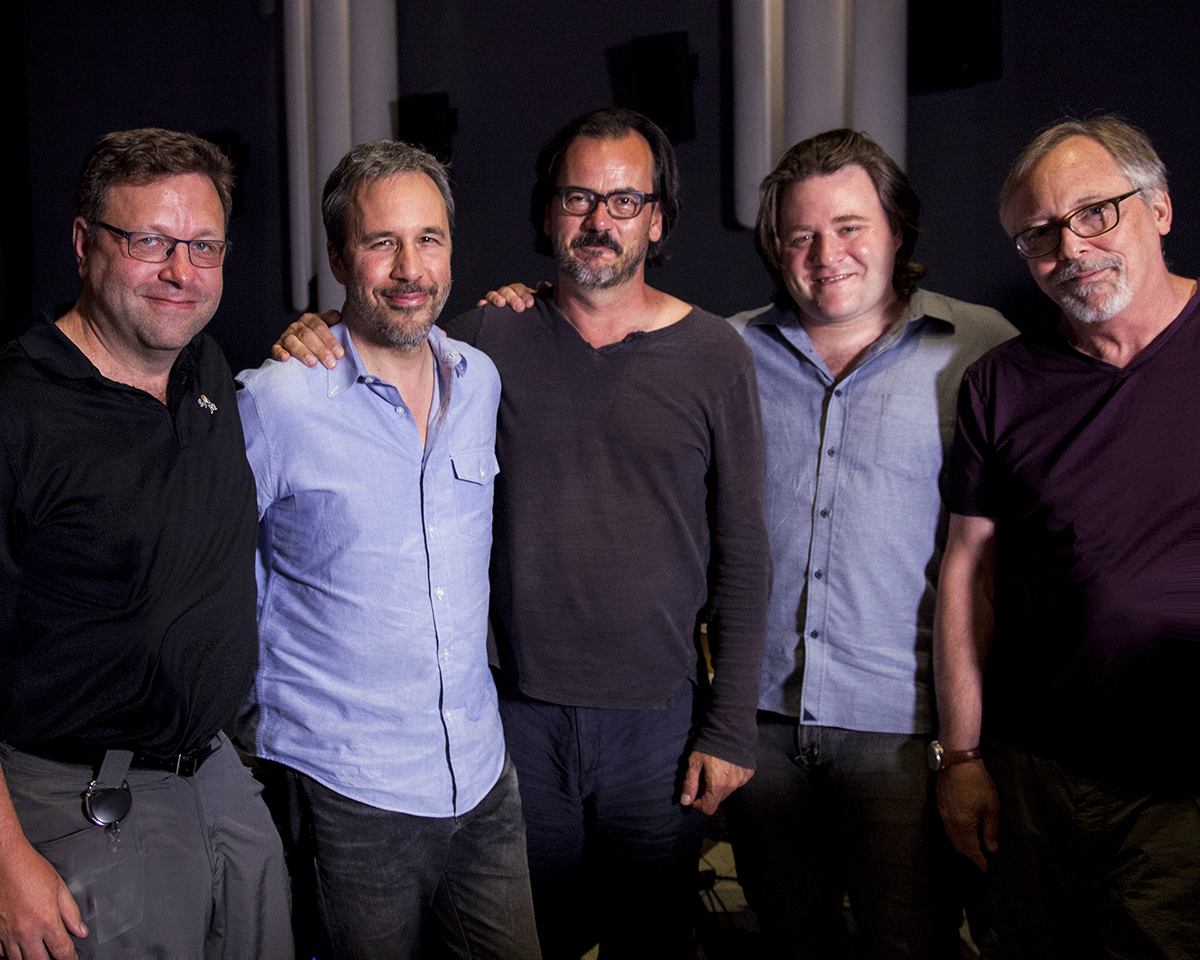
“When deciding on sound editorial, we knew it would be a perfect marriage between Theo and Mark,” Walker recalls. “Denis and I spotted Mark’s fanatical devotion to recording fresh sounds. We loved all the amazing vehicles on Mad Max: Fury Road [2015], but we wanted to merge that with the kind of left-field approach I knew we’d get from Theo. The blaster sound effects are a great example of this: Mark recorded a bignormous sniper rifle and Theo added a [Roland] TR-909 bass drum sweetener. Together, it gives the gun the most wicked signature! That, in a microcosm, is the kind of creative match we needed to create sounds that we’ve never heard before on film.”
At their request, Mangini received a call from post-production supervisor Brad Arensman, asking if he could meet Denis and Joe, both of who had seen Fury Road and liked the soundtrack, which was awarded Oscars for both Sound Mixing and Sound Editing. “What could I say, but yes!” Mangini concedes.
Set more than three decades after events portrayed in the first film, LAPD Officer K (Ryan Gosling) is a new generation of blade runner, who has unearthed a long-buried secret that could plunge the post-apocalyptic society into potential chaos. K’s discovery leads him on a quest to find Rick Deckard (Harrison Ford), a former blade runner who’s now gone missing.
The cast also includes Ana de Armas, Sylvia Hoeks, Robin Wright, Mackenzie Davis, Carla Juri and Dave Bautista, as well as Jared Leto as Niander Wallace — who has now taken over the Tyrell Corporation, innovators of the original replicants. The screenplay was crafted by original scripter Hampton Fancher with Michael Green, based on characters from Philip K. Dick’s novel Do Androids Dream of Electric Sheep? Scott served as an executive producer for the Alcon Media Group/Columbia Pictures film, distributed domestically by Warner Bros. Pictures in early October. The unusual score was composed by Hans Zimmer and Benjamin Wallfisch.

“There is no director more suited to make this film than Denis Villeneuve,” Walker offered. “He’s a genuine sci-fi sophisticate and enormously respectful of Ridley’s original creation.” Because the shoot was going to be complex, and a lot of his time would be devoted to visual effects, Walker says, “I soon realized that I couldn’t handle developing the sound templates I would normally create during assembly. I needed to get the rhythms right, to pass something properly fleshed out to visual effects so early on. It’s not as if I could pick a Denabase machine sound off the shelf!”
Walker turned to Green to start sound design and help clean up the dialogue tracks. “Theo was our one-stop shop for a lot of things,” the picture editor says. “For example, he recorded some ADR on location while the actors were still in character — which is better than recording them in a distant ADR suite three jobs later.”
Sound Sensibilities
Since both Villeneuve and Walker firmly believe that sound plays a pivotal role within the filmmaking process (the latter is also a composer/musician and a former sound editor), those sensibilities were at play during production and post-production. “I joined the project full-time when Denis and Joe returned to Los Angeles in late 2016 and started work on the director’s cut in their edit suite at Sony Pictures Studios,” Mangini explains. “Theo had been working on the project since the start of location shooting in Budapest. I came aboard in January 2017 and coordinated the team effort to edit and sound design the myriad elements we would need for this complex soundtrack.”
“Joe and Denis were working on hundreds of visual effects temps as the film was being shot in Budapest,” Green confirms. “So that they could provide feedback as they worked, and I could generate early sound ideas that could inform Joe’s picture edits. We had worked together 10 years earlier on director Rupert Wyatt’s first film, The Escapist [2008], for which I served as supervising sound editor and sound designer.
“For Blade Runner 2049, I concentrated on creating ambiences and dense atmospheric sounds that in the original Blade Runner were formed, in part, by Vangelis’ iconic score,” Green continues. “Our plan was to create a soundscape that has no distinction between atmospheric environment and film score. As a composer, I think I brought a unique sensibility to the soundtrack, including pulsating atmospheres and custom, futuristic sounds that set the scene for the film’s dramatic action, as well as sound for the holographic scenes and the DNA-reading machinery.”
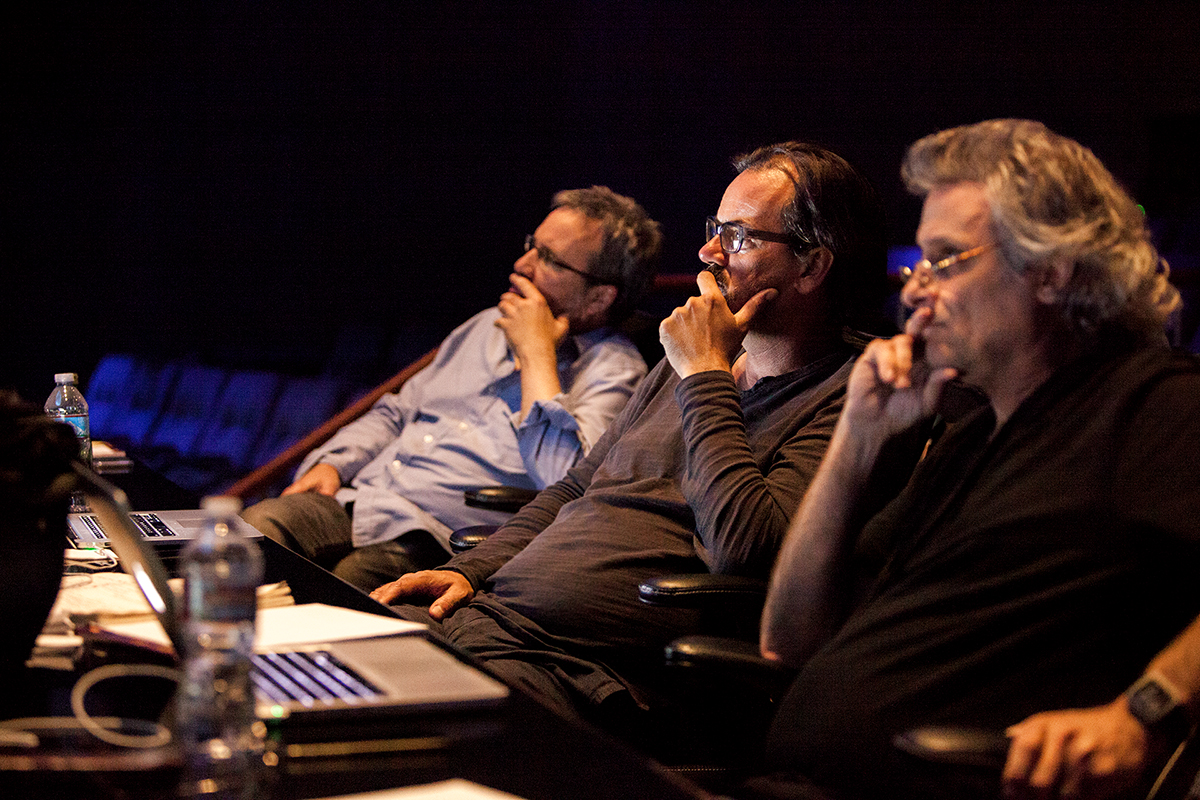
While working in Budapest, Green recalls that, since the film editor lacked temp sound effects tracks, he offered Walker several sound ideas. “For example, we had no spinner car sounds, so I developed some early elements,” the sound designer adds. “Joe also wanted ideas for a dense atmosphere during scenes with maybe two players on the set; we liked the idea of pulsating atmospheres to help set the scene of the film’s dystopian future.”
Green was originally brought to the set in Budapest for a six-week try-out that turned into three months, and then nine months in Los Angeles. “The sounds we recorded range from large, rusty vehicles being dragged through scrap yards, to a sad, decaying spinning top from the 1950s,” he explains. “The soundscape is at times so delicate and quiet that our team created an avant-garde band of five people, sitting in a noiseless room, individually dropping piles of dust and small pieces of dirt.”
“I went to Budapest during principal photography to meet Denis and Joe for the first time,” Mangini recalls. “Joe showed me his cut footage for an hour and we talked sound — mostly about the silences, which are the hardest to do and critically important to Denis’ vision for his film. I suggested that the best way to achieve the results we were after would be to add very small sounds that interrupt that silence; we cannot go to complete silence because the audience will think that the projector has broken! We went for a deep silence but, every now and then, added a small sound to remind the audience of that silence. We also wanted to avoid all the immediate tropes that come to mind. In fact, there isn’t a cliché in the entire soundtrack.”
The supervising sound editor recalls that during his first three month on the film — “in free-association design mode” — he had a sign on his video monitor that he attributes to sage advice from the director: “Don’t be afraid to not be logical.” “In other words, take chances [with the soundtrack],” Mangini says, explaining, “Denis encouraged us to compose, to use sound design as score. He is not of the school of directors who believes in overusing music; less is more. His hope was that sound design could work in a similar capacity, allowing score to be used when it was most necessary and effective.”
In that respect, while the sound designer was embedded at Sony with picture editorial, and other team members were working at Formosa, “Green became a valued member of our team and formed a great connection with Joe and Denis,” Mangini continues. “Sound design for the film was complex and demanding, and sound editors Chris Aud, Lee Gilbert and Greg ten Bosch really rose to the occasion and contributed many novel elements themselves. Chris, who worked with me on Mad Max: Fury Road, had the enviable task of designing all the sounds of the spinner motors. One of the high-points of design in the film was the Hologram Funhouse, which was designed entirely by Theo and remains one of my favorite sounding scenes in the film.”
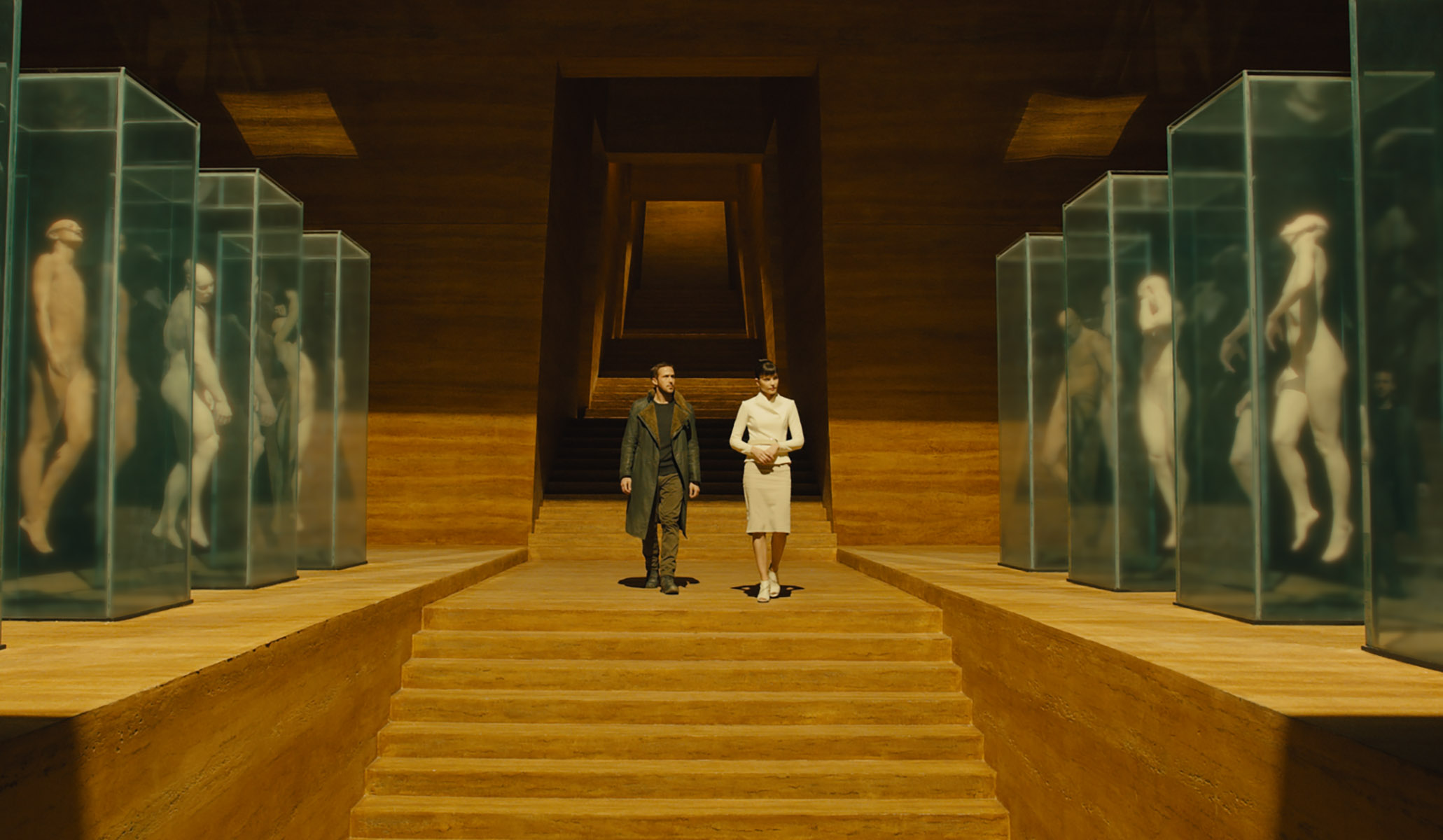
For the key scenes in derelict buildings, for which Mangini wanted to create silence interrupted with small sounds, he turned to Formosa’s recordist and sound effects editor Charlie Campagna. “We went to Charlie’s music studio in Glendale, where we used a custom Schoeps seven-channel microphone rig to record the sound of tiny amounts of gravel and dust falling onto floor surfaces from unusual positions,” Mangini says. “That created atmospheres and an immersive sense of space; the room was alive but dead at the same time — with our added reverb.”
For the sounds needed during a scene in which K’s spinner crashes, “We rented a junk yard and recorded the noise of metal crashes and scrapes,” Mangini explains. “With Foley editor Ezra Dweck and effects recordist Eric Potter, we used a crane to drop piles of crushed metal. Eric also recorded the sound of metal being dragged across concrete, as well as the sound of waves crashing against a sea wall, which we needed for the film’s conclusion.”
To capture the sound of bees, Ezra Dweck and Charlie Campagna used Mangini’s seven-channel surround array augmented with spot microphones connected to a pair of Sound Devices 788 recorders. “These sound designed 7.0 recordings were laid directly into the Atmos bed, with additional channels being assigned as objects,” Mangini says. “Because Denis doesn’t like sounds in the surrounds that might distract the audience, we focused on atmospheric sounds for the bees, tilted toward the front screen channels.”
Mangini also developed a custom rig with his Schoeps array, using a handgrip mounted below a sheet of acoustic foam backed by a dense rubber membrane, to provide immersive rain for key scenes. “The foam eliminated the sound of rain directly hitting the mic’s windscreens, while the rubber prevented rain leaks,” he says. “Fortunately, last January and February we had a lot of rain here in Los Angeles, so I went out early in the morning to an empty parking lot, and wore absorbent sweatshirt and sweatpants to reduce the sound of rain hitting me! Those immersive recordings sounded particularly effective during rooftop scenes with Joi [de Armas] and K in the second reel.”
For the Foley elements, Mangini worked closely with Foley artists, including Goro Koyama, “who not only did Foley the traditional way but also acoustic Foley performed in large acoustic spaces cast for key scenes,” he says. “They believe in using real spaces and locations for Foley elements, including a city hall, a library basement and a skating rink. We used video playback for our mobile Foley rig to secure sounds from locations that mimic the real sets used in Budapest.”
Turning to dialogue and ADR, Mangini continues, “Byron Wilson is one of the greatest dialogue supervisors in the universe. Working with Kira Roessler and Mike Hertlein, Byron helped clean up the production tracks, which were good but contained extraneous noise from a busy set. We also revisited the style of Vangelis’ original score for Blade Runner because that music served to provide mood and textures normally covered by effects.”
Green also developed world-ized sounds by “replaying tracks in real atmospheres to capture complex reverberation patterns of natural spaces,” the sound designer explains. “Sometimes I played them back at double speed, and then slowed down the ambience recording to double the room’s perceived size. I also used that effect for overhead announcements and voices to match the large, cavernous spaces. Convolution reverbs like Altiverb do not feel gritty like real spaces do.”
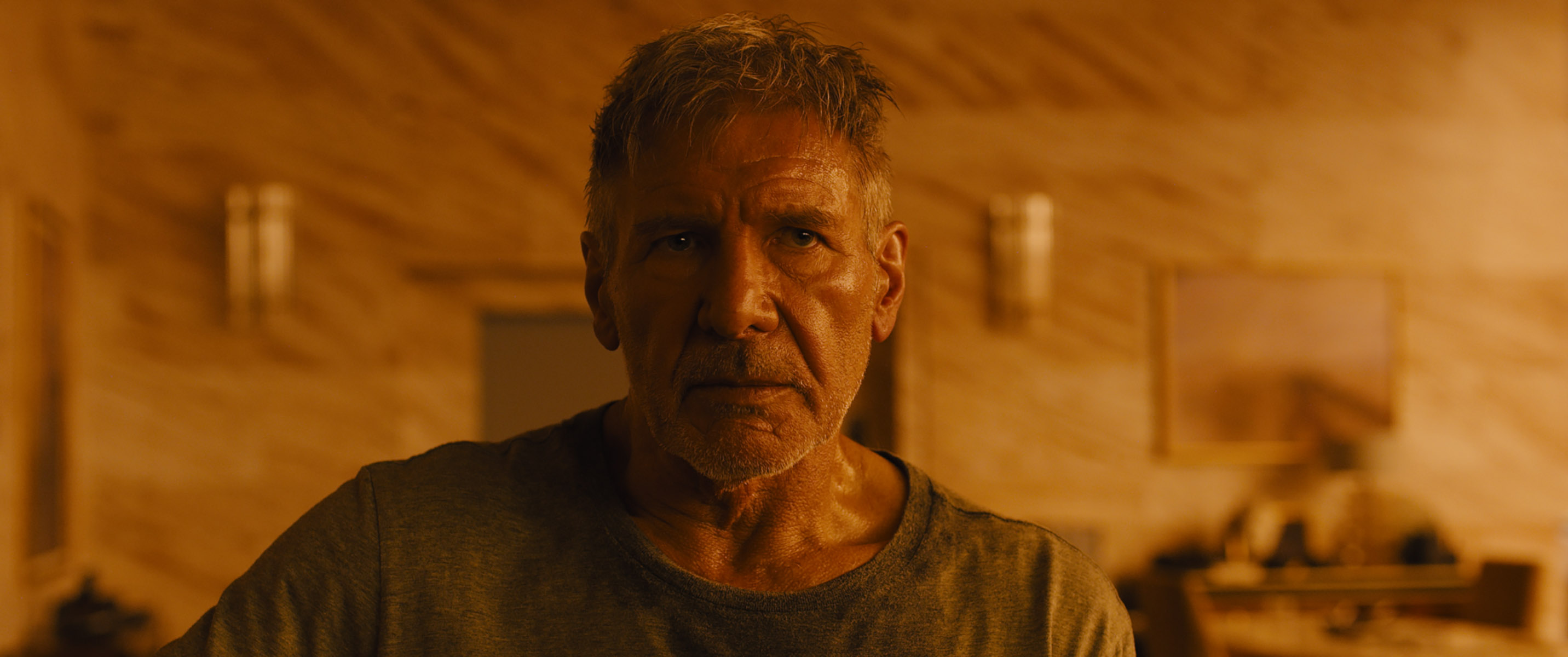
Picture Pacing Honors the Original
The film’s pace was chosen to pay tribute to the original Blade Runner, according to the picture editor. “I tried to avoid cutting too often, to allow the audience to really soak up the actors’ expressions and to give [cinematographer] Roger Deakins’ spectacular lighting patterns their moment,” he explains. “Rhythm or pace is always driven by the script and the performance. This is a substantial story, so we set about trimming dialogue and creating as much tension within that structure as we could. We wanted to showcase the intensity of the performances.”
Some scenes have a deliberately dreamlike pace, according to Walker, but are “always drawing closer and closer to bursts of violent action. There’s a tense scene between Luv [Hoeks] and Joshi [Wright], which ends with swift cuts of Luv slashing with a blade, switching dramatically to a shot from outside the window and the near silence of snow falling as Joshi drops to the ground. I set out to make contrasts as sharp and intense as possible.”
The editor reveled in a moment where K seemed to snap. “There was scene between K and Dr. Ana Stelline [Juri] — a designer of implanted memories — who is deciphering whether K’s are real or fake,” Walker explains. “On one take, Ryan blew off steam and angrily kicked a chair. This was a first glimpse of the new K, who was becoming Joe, our final hero. In the middle of a performance that’s so deeply stoic, the intensity of this reaction is like a bolt of lightning.”
Mangini agrees: “We convinced Denis to put back that shot of K screaming in anguish; he had taken it out because he felt it was out of character. I argued that it was the emotional high point of the movie, and convinced the audience of K’s convictions about him being the child.”
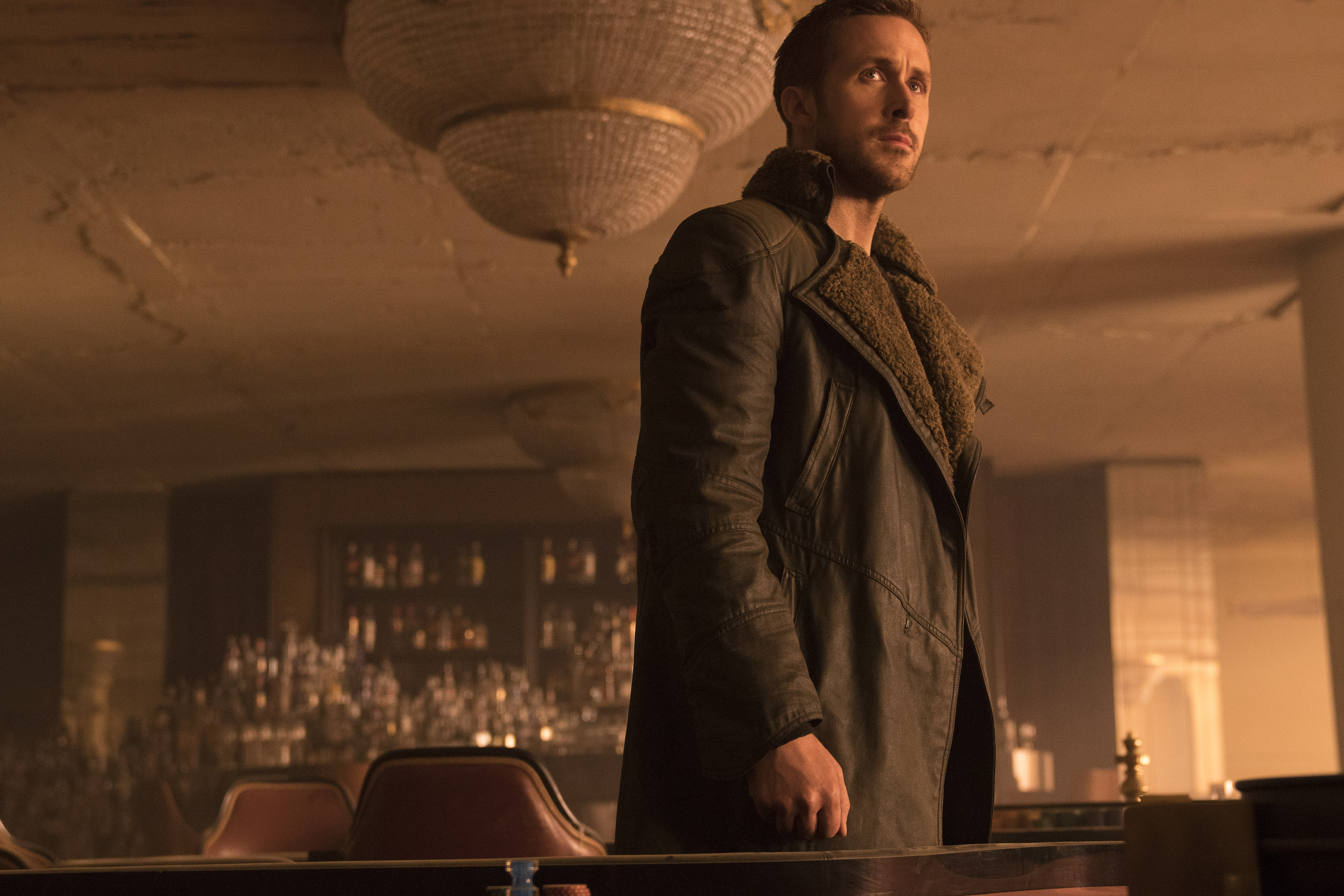
The film’s opening scene, Walker explains, helped establish K’s character and his replicant power against an earlier model. “I wanted to build that key scene’s tension —pulling the elastic band tight before it breaks.” In reality, this long opening segment was based on a discarded scene from the original Blade Runner script by Hampton Fancher, in which Deckard locates a replicant on a farm and terminates him.
“There was a lot going on underneath the drama,” Walker adds. “We feel great empathy for Sapper Morton (Bautista), and it sets up the fact that K gets no pleasure in ‘retiring’ him. The pauses were rich and filled with menace; the only featured sound effect coming from a pan of soup bubbling on the stove. The sequence was boiled down to its essentials, landscaping the edit so that the audience appreciates what’s going on.”
For the Hologram Fun House scene, Walker recalls that there was a constantly evolving pre-visualization. “We had to be ahead of the game, because we knew that, after principal photography, the holograms would be shot to music playback against green screens,” he says. “We edited the pre-viz in my Avid timeline, picked the music, then folded in rehearsal footage from our choreographer. I ended up knowing every intricacy to such a degree that Denis asked me to supervise the second unit, filming the dancers in continuity with both the edited music and the lighting patterns already shot by Roger. It was a lot of work, with upwards of 30 video tracks on my timeline for each shot.”
The temp team presented a sophisticated version of the sequence during the first assembly in Los Angeles. “Denis was happy with the whole assembly at that stage — except for one sequence,” Walker reveals. “‘The Hologram scene doesn’t feel like Blade Runner,’ Denis said to me. It was a big disappointment, but he was right. The holograms had become the show, and we’d lost the manhunt at the heart of it. It’s the first time Deckard has encountered a replicant for a long time, and the last one — Roy Batty —nearly killed him.”
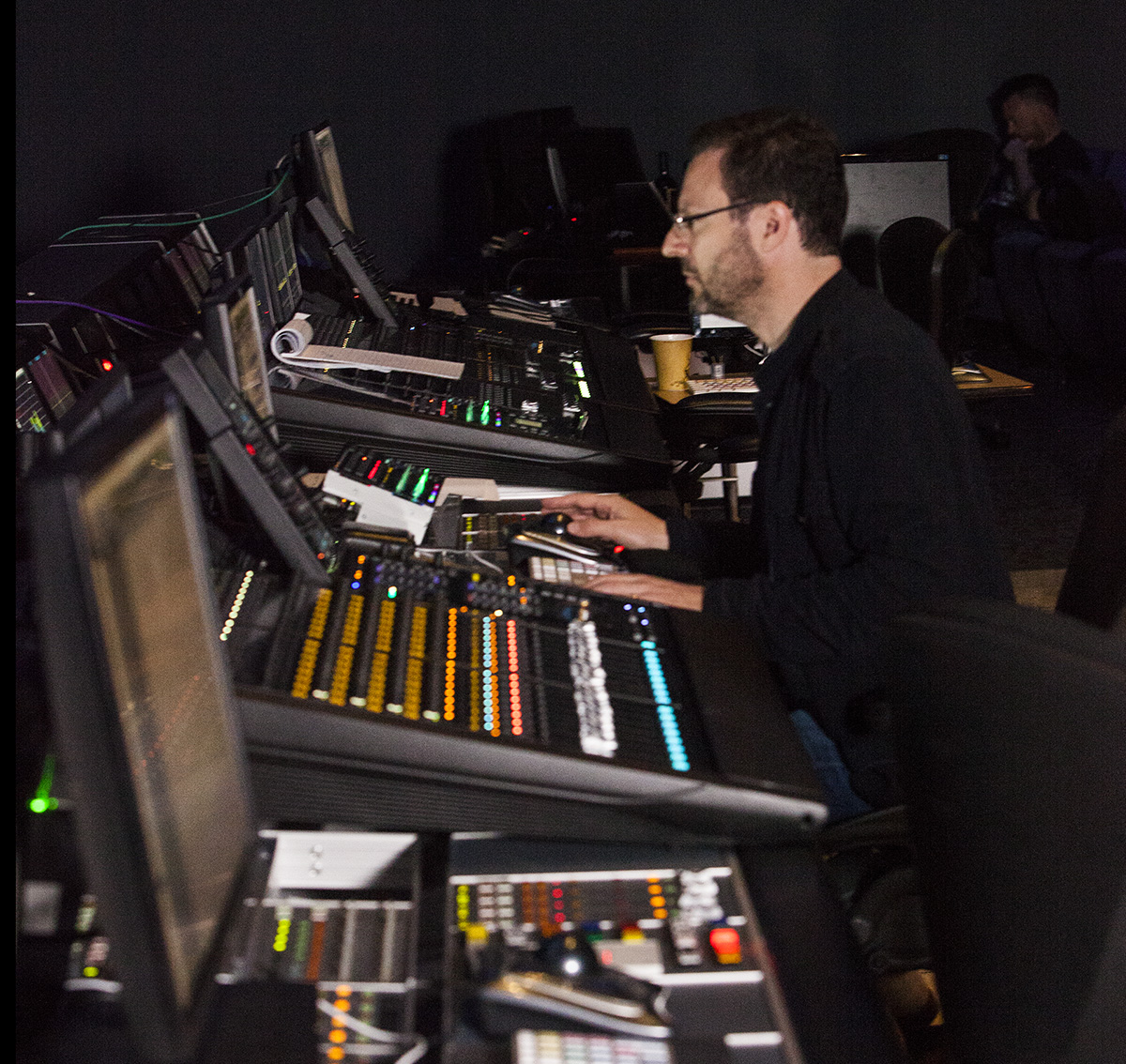
Walker recut the scene and “decided to pretty much junk the music,” he says, explaining, “I wanted to emphasize the spookiness of this broken machine and found some golden moments before ‘action’ where the dancers were waiting for the playback music to start. So, you have these ghostly figures standing by, heavily lit from above, which ended up in the cut. Theo provided a soundtrack of the lights whirring and ticking; it was a big transformation. Clint Bennett, our supervising music editor, whose amazing work I knew from Blackhat [2015] and Arrival [2016], made hundreds of re-edits for us. We wanted the music to just crash in and out with a jolt, as if it was being spat out from one or two faulty loudspeakers.”
The Hologram Fun House scene also proved to be Green’s biggest creative challenge. Originally staged as a fight between K and Deckard within a Las Vegas-style casino’s Hall of Mirrors, and reminiscent of Deckard’s encounter with the Roy Batty replicant in Blade Runner, the scene had been conceived with dozens of high-level music tracks.
“During fine cutting, Denis didn’t think that the scene was working,” the sound designer recalls. “I suggested breaking it up and adding silences to imply that, after 30 years, the display technology was failing. Denis and Joe restructured the entire scene, using that intermittent sound for the faulty holograms to add tension. Joe edited with the stuttering sound and then turned it over to me to cut in more glitches; we went backward and forward maybe 40-50 times on that 10-minute sequence. I like working with left-hand ideas — you need to take chances.”
The Re-Recording Brings Its A-Game
“Denis Villeneuve called us at Formosa Group and we hit it off straight away,” Hemphill offers. “We started a 10-day temp mix last January and then, after 5.1-channel pre-dubs on the Cary Grant Stage at Sony Pictures, we moved to the Atmos-capable William Holden Stage, where we completed the first pass of immersive finals in August in just nine days. Which, for a nine-reel film, was remarkably efficient! We spent just three days on fixes, followed by a month completing the deliverables and music and effects. We also did DTS-X, Barco Auro-3D and IMAX mixes.
“Working with Denis was amazing; he is very inclusive and collaborative,” the effects mixer continues. “The tone of our mix was definitely ‘Show Us What You’ve Got.’ Denis was not going to explain something overtly that he wanted from me in the mix; rather, he was going to see what I brought first. He’s a true explorer of people and ideas.”
Hemphill considers Blade Runner 2049 to be the most dynamic film on which he has worked. “The third act in the deserted buildings is very quiet, with just footsteps and an evocative score; we needed to find the tone that brings the story forward with no excesses,” he says. “The effects were played very quietly — more like a narrative-driven film than a sci-fi offering. And dialogue was always king for us; we travel through the film via the actor’s voices. It was a truly dystopian environment in which we had several very subtle sounds. It’s a dark, dreary world that can be oppressive, so we needed to give the audience a break now and then.”
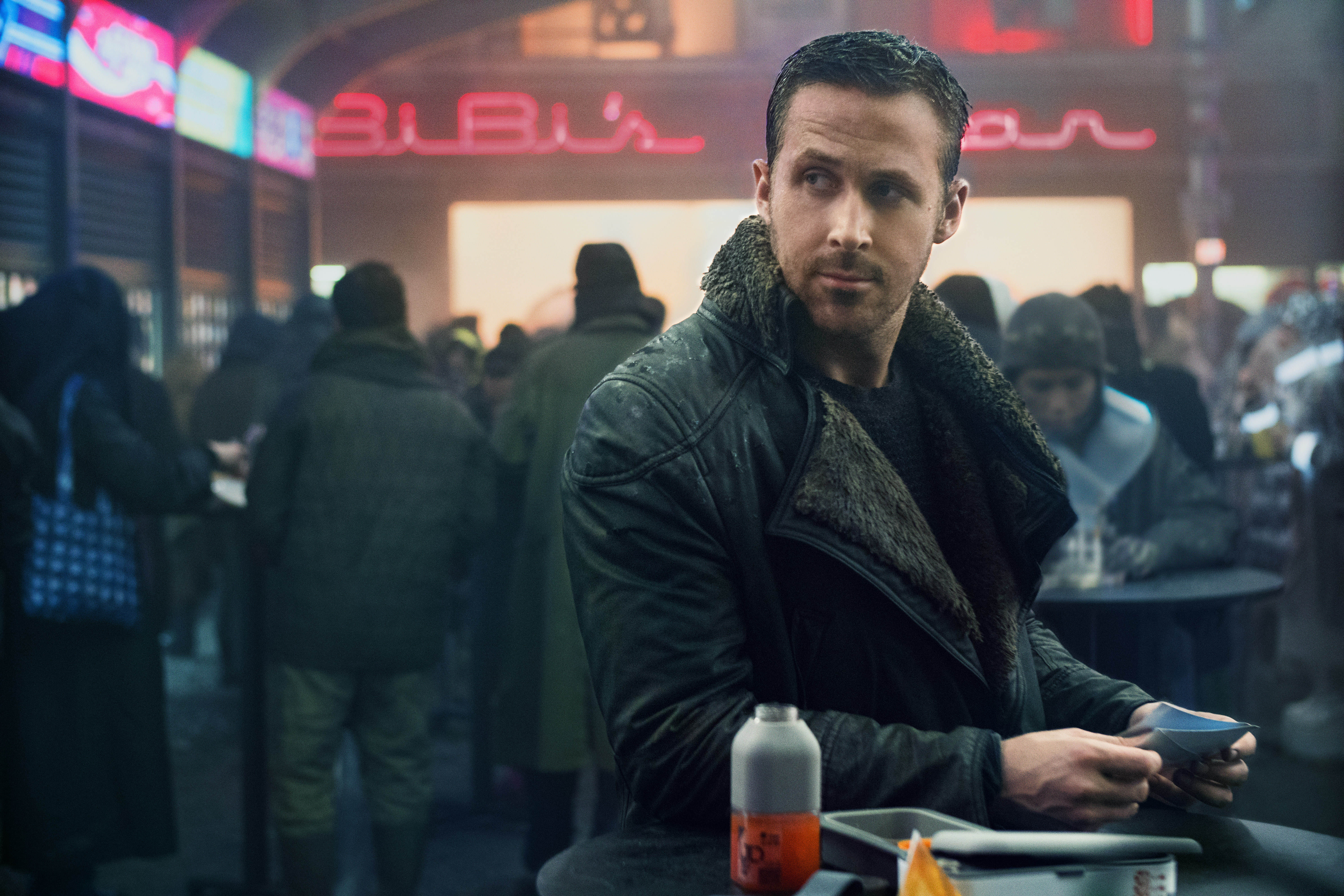
Hemphill’s most challenging task was to integrate his appreciation of the film with the sounds that Mangini had cut — and make everything work together. “Mixing a film soundtrack is rather like a shopping cart race,” he elaborates, “ You are in a room full of creative people all trying to do what they to do to make it work, fill up the soundtrack and then leave by the deadline.”
Bartlett agrees with his mixing partner’s analysis. “Denis wanted us to bring an intense sense of the original Blade Runner, to maintain the thread and inhabit the same universe,” the dialogue/music mixer says. “The music was to be in the same vein as Vangelis’ iconic score. Clint Bennett supplied a lot of split-out stems from Benjamin Wallfisch’s and Hans Zimmer’s scores. We would put up a big cue and listen carefully to the elements — solo all the 5.1 and stereo stems and listen for choices.
“Denis wanted to hear all the synth elements; he didn’t want anything that sounded too new and would take out anything that didn’t feel like it belonged,” Hemphill continues. “He liked the composers’ use of a vintage Yamaha CS-80 synth — which Vangelis had also used — and hence staying in the same vein and flavor. We put together the remaining tracks and rebalanced the score on the stage, spreading out the stems in Atmos immersive surround.”
Having worked with Zimmer and Wallfisch for four months ending in June 2017, Bennett recalls supplying the music re-recording mixer with wide, stemmed-out cues and extra bits. “We then went through the score on the stage and honed down the cues to their essence to create a tonal balance,” the music editor says. “We had no orchestral elements because Denis felt they added a discord that the score didn’t need; it didn’t feel like our film.”
Wallfisch had created two, 10-minute free-form suites not written to picture, according to Bennett. “From those we selected several cues, particularly during the final scenes as Luv dies in the crashed skimmer on the sea wall. We returned the edited track to Benjamin, who added a front end, orchestration and extra segments. The Tears in Rain sequence over K’s death also used a classic Yamaha CS-80 synth that paid tribute to Vangelis’ seminal cue over Roy Batty’s death at the conclusion of Blade Runner.”

For dialogue and ADR, “Byron Wilson surpassed himself,” Bartlett states. “[Production mixer] Mac Ruth delivered very good tracks from the set, but we had a lot of difficult environmental noise to clean up. Byron and I worked hard to clean up the tracks while keeping a very natural sound to the dialogue. I also worked closely with Joe Walker on different takes and angles to make appropriate choices. The story is told with dialogue, so we honored the choices made during editorial and maintained the fullness of those tracks. I used iZotope plug-ins between lines plus reverbs and ambiences, including Altiverb and Fab Filter.”
The dialogue mixer also used a new DSpatial plug-in from Spanish developer Rafael Duyos, which offers object-based surround sound using a proprietary physical modeling engine. “It lets the user re-create real spaces and to locate, move and rotate sound sources in real time,” Bartlett explains. “On a half dozen scenes, we placed mono sources as Atmos objects, using two 37-channel returns.”
For scene that takes place in a domed room where Dr. Stelline designs memory implants for the new-generation of replicants, “the glass was problematic with sound reflections as we cut between the two key characters talking across the glass barrier,” Bartlett recalls. “We wanted a consistent sound; inside was a bit duller with a small reverb, while K on the outside took a short, tighter reverb with more reflections.”
All in all, the stage crew received 24 tracks of group ADR for the bar scenes, billboards and signage, together with between four and 16 tracks of PA announcements. “We also had futz tracks inside the spinner and the baseline test voices overheard in one scene,” Bartlett adds. “Plus 12 to16 tracks of production dialogue with futz tracks. For music, I received a lot of 5.1-channel and stereo stems — maybe up to 20 stereos, dependent upon the scene.”
Sound editorial was the key to the project’s success, according to Bartlett. “We could reshape the material once we had seen the entire narrative arcs,” he says. “We wanted to tell Denis’ vision of what it is like to be human, and what it is like to be non-human. What is humanity, and what do we do to achieve that status? I’m particularly proud of the environment we created with the dialogue tracks, adding just the right amount of ambience to match the stunning visuals. The Atmos mix gave us a lot of space and volume, plus clarity without compromising the dynamics.
By his own admission, the toughest part of Mangini’s job was working without music. “Early on, Denis gave me a cut of the film without music and asked me to make scenes work with sound only, to compose with sound,” he says. “He prefers to use music when it needed to be the most effective,” Mangini says. “As such, he understood that sound design could do much of the heavy lifting, and do a greater service to the film. There are vast sections of the film that not only service with sound alone, but have very musical tonalities that function to create mood without melody.”
By way of example, the supervising sound editor cites the sounds of the spinner vehicle engines, which were designed by Aud using (among other elements) bullroarer recordings made by Green. “We created several iterations of the spinner sound before Denis found something he liked. We were sure we didn’t want something that sounded like the ‘Star Wars universe.’ Denis had asked it to sound ‘banal…like a lawn mower.’”
According to Walker, director Villeneuve considers the mix for Blade Runner 2049 to be his best. “Although the music was a late arrival, and was being edited during the mix, everybody on this project was on point. Denis has huge expectations of everyone and sets the bar very high.
“But being Canadian, he does it in the nicest possible way.”
